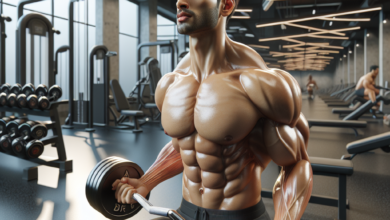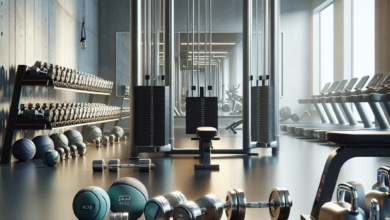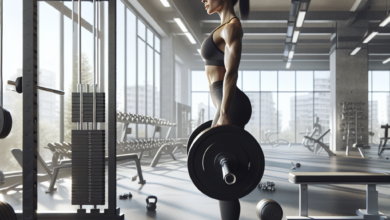What Muscles Do Farmers Walks Work?: Almost All of Them!

An impressive bench press will make heads turn in the gym, and there’s no harm in showing your prowess, provided you tap the gains. Nevertheless, sometimes you want to exhaust the benefits of a workout without straining. That’s why you may consider adding a farmer’s walk to your exercise routine.
It’s as simple as having equal weights on both sides and taking a stroll, but it does more than a pull-up or bench press. And you don’t need extraordinary equipment for this. Anything from a pair of dumbbells to barbells can do.
The rule is straightforward: walk, don’t squat. That’s it.
Even so, it’s not as easy as it sounds. To benefit from the workout, you have to load up the weight, and that makes it a bit demanding, but of course, not like a bench press.
Let’s understand more about the farmer’s walk below.
The Areas It Hits
The farmer’s walk hits every muscle in the body, even if you don’t flex or bend your joints. It mainly targets your back and shoulders but spreads to the entire body. You can work all muscle groups in a single movement.
Here are the areas hit by the farmer’s walk.
Arms
While the lift relies on the back and shoulder muscles, you need strong arms and a firm grip to bear the heavyweight. It works your forearms intensively, strengthening your grip strength. The biceps and the triceps are also included in the lift, as the muscle groups help stabilize your shoulder and elbow joints.
Back and Shoulders
The lift heavily targets the back and shoulder muscles. The entire weight pulls down on your traps and delts. As much as you’re not flexing the muscle, they experience extreme strain that rips them down, making this lift a suitable workout for your upper back. The continual pull causes your back and shoulder muscles to remain in a contraction, while the strap and delts strive to keep the shoulder blades together and the joints stable.
Legs
Walking is also part of the move, and we can’t ignore the effects it has on the muscles involved. The only parts of your body moving during the lift are your legs, so it extensively hits the hamstrings, quadriceps, gluteus medius, gluteus minimus, and the calf muscles. In essence, every single muscle in your lower body is hit, making it an incredible lower body workout that doesn’t require you to squat or lunge.
Core
You need to keep your back straight throughout the exercises, and that’s where the core comes in. As soon as you begin making strides with heavyweights on each arm, your core muscles will start experiencing a little strain. Also, your back and abdominal muscles work together to bear the additional weight and offer support to your torso. With this move, you get firmer and tighter abs without having to perform a heavy lift.

How to Do the Farmer’s Walk
While the farmer’s walk is one of the most straightforward workouts anyone can do, you need to perform it correctly to reap the gains. Doing it the wrong way can also result in an injury, as you’ll be handling a considerable amount of weight.
To begin with, grab the weights on each arm, whether you’re using dumbbells or kettlebells. As you do this, be sure to keep your back straight. It’s a precaution you should never ignore when performing this lift. Also, since the exercise targets your shoulder and back muscles, try heavier weights, as long as they’re manageable.
Now that you have your weights firmly gripped, start walking. If you’re doing it in a small space like a gym, you’ll have to keep walking back and forth to achieve your miles. But if you’re doing it in the field, a single lap would do, depending on your goals.
Whichever place you choose to perform the workout, keep it consistent. In that way, you’ll be able to track the distance you walked and measure your milestones.
The farmer’s walk requires you to go with big weights, but if you can’t access the extra pounds, you can still go light. It still works, even though you won’t feel a similar pull on your muscles. Since no joints are involved, going slow might not help as such. That means you have to walk longer to feel the effect of the workout.
Alternatively, you can try an overhead farmer’s walk. Here, you grab two dumbbells and press the weight over your head and begin walking. This move offers more benefits than the traditional farmer’s walk. It engages your back, shoulders, triceps, traps, and biceps. Also, it works your core muscles more than the other lift.
How to Include the Farmer’s Walk in Your Workout Routine
The farmer’s walk targets both the lower and upper body, meaning it can replace some everyday workouts. A typical exercise program includes a push day, leg day, and a pull day.
With this kind of routine in place, bring in the traditional farmer’s walk on your push day. While on the leg day and pull day, have the single farmer’s walk and the uneven farmer’s walk respectively. It’s quite straightforward, and you’ll get the hang of it as days go by.
While the farmer’s walk is one of the easiest to do, not many people do it. Most of us don’t like feeling uncomfortable during an exercise, so the fact that the lift shreds the shoulders makes it unsuitable. But the strain is what makes this move beneficial. It’s an all-in-one exercise that hits every muscle in your body in one movement, so you have a reason to include it in your workout routine.



